
Biodanza aims to impact individual awareness of healthy self-esteem and self-confidence, interpersonal relationships and group development. Community cohesion and ethical consciousness and behaviour are also actively encouraged. As a result, tangible change can be measured over time.
In future we plan to initiate, organize and facilitate Biodanza related interventions and programmes in South Africa.
Meanwhile, we would like to showcase the possibilities of the work that can be done to support wellbeing. We can do this by featuring work that has already been done by our facilitators in different community settings.
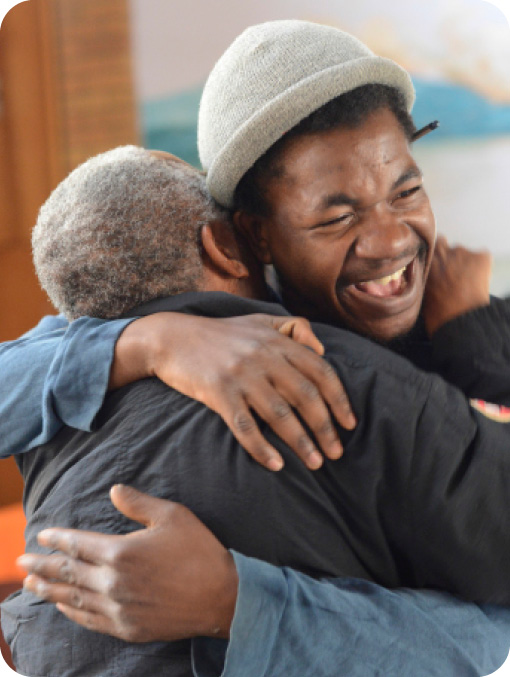
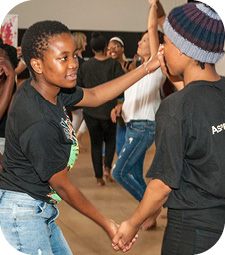
Biodanza offers many benefits. Such as rediscovering the joy of being alive or finding a new zest for life. As well as proven health & psychological benefits, and an experience of connection to nature and the cosmos.
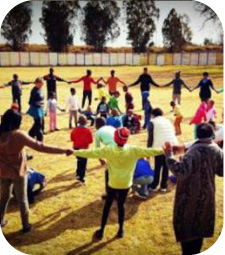
Home of Hope provides shelter for exploited girls aged 8 to 18. They aim to create opportunity for sustained physical, educational and holistic wellbeing for young girls in Johannesburg.
Every Saturday morning the girls gather for experiential development activities.
During the last 8 years, facilitators have been offering a Biodanza class, at least once a month to this group.
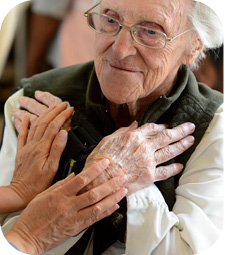
Classes were given at a residential care home for the elderly and people with special needs in Parktown Johannesburg. These sessions were hosted by our recently deceased facilitator, Andrew Lindsay.
There were between 17 and 30 people who came every 2 weeks. Many are brought in wheelchairs. The residents move as much as they can, which is sometimes quite minimal. Even so, the facilitator managed to engage with them and it made an enormous impact.
One of the female attendees testified that attending the class relieved her pain. And a care worker was overheard telling a resident: “If you try it once, you will come again. It’s so beautiful!”
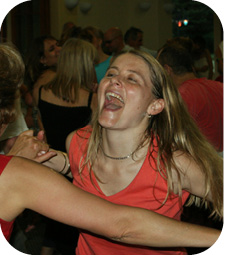
Weekly classes were facilitated at Hadassah Center for women and girls in South Johannesburg for a period of six months.
The Biodanza class was the highlight of the girls week. They spoke of how tough it is in the house and how they bicker and fight. And that, on the contrary, Biodanza brings them together and helps them forget their squabbles.
In these spaces we work on feelings of shame. Subsequently strengthening the identity beyond that of addict. And then creating experiences of freedom and self expression within the safety of the Biodanza class.

Here follows an example of how Biodanza has been adapted for use in school contexts. The idea is to support the behavioural development, emotional wellbeing and healthy connections among learners.
In November 2018, Biodanza facilitators, Carol Surya and Carmen Clews’ NGO – Wellbeing in Schools and Education (WISE) started a new school-based initiative called Dance Assembly. Carol & Carmen directed their attention to Sentinel Primary – a township school in Hout Bay, Cape Town.
The aim was to use dance to help vulnerable children in highly-stressed communities. Attending Biodanza made it possible to have fun while developing essential life skills such as healthy communication, expression and mindfulness. Biodanza also reduced stress and anxiety in children.
A Biodanza Didactic teacher, Shumi Chimombe, developed and facilitated the initiative with learners from grade 1 – 3. Each day there are two 15 minute sessions with approximately 60-80 children at a time. Their teachers provide support in controlling the high energy among the kids.
The intention for Dance Assembly is to develop a self-sustainable model. In short, students are encouraged to dance and connect for 15 minutes per day before class starts.
A simple useable model has already been developed which is based on the Biodanza model (the ‘Curve’). We start with welcoming and grounding in an opening circle. Then we warm up with walks and greeting encounters such as high-fives and embraces. We include rhythmic dances and liberation of movement, and – very importantly – games. For instance trains, clapping hands in pairs or in groups and dancing together in small circles. This is where we see the healthy connections through feedback and contact begin. These are followed by calming down exercises before a final self-loving affirmation and meditative song; ‘I am Bountiful, Blissful and Beautiful’ by Bachan Kaur. Biodanza music is mostly used. As well as some contemporary pop songs that the children enjoy such as ‘Better when I’m Dancin’.